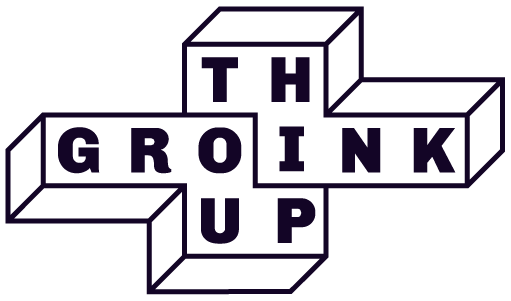10 highlights from our Lazy Book Club on 'Overthrow II'
The first Overthrow counts easily as one of our top books for strategists, and Overthrow II is a fantastic follow up to it.
So regardless if you work in marketing, brand, advertising, digital, content or social, the tools here are applicable to a wide range of strategy disciplines.
Here’s the top 10 things we learned from our Lazy Book Club discussion around Overthrow II.
1. The danger of challengers
As an incumbent you used to be able to copy what smaller innovators were doing in your category. However, today reputational damage can be enormous for brands that let others innovate and capture their audience’s imagination.
2. Big can mean bad
BIG has become less desirable in many markets. In fact, the word BIG is one you can put in front of any category to drag out its negative connotations. You’ve heard of big pharma, big food. However, if we say “Big Football” - a phrase we’ve just invented - it has immediate negative associations of corporate greed, corruption, a sport no longer for the fans. This shift from desiring Small to Big has been the wind beneath the wings of many different challengers.
3. Embrace share of distinctiveness
Think share of distinctiveness vs share of voice. Challenger brands usually have a very small “share of voice” because their marketing budget is restricted. However, Oatly’s “share of distinctiveness” in its category, against much larger brands, is very high.
4. How to affect change
How can you tell a brand manager they need to be doing things differently? Here are four steps:
Create a case for change - Lay out their ambitions/objectives next to what the brand is doing at the moment, if they believe what they’re doing at the moment isn’t going to do it then you can get to next stage.
Take common ownership of the shift you want to help them make - You aren’t telling them what to do with a PPT. You are facilitating.
Ensure there is the capacity to change – Are they able to experiment? Make sure you put boundaries around risk.
Develop a realistic work plan – You have to know how long it’s going to take to effect change and for the effects of change to be visible. Put a 18 month measure in, not a 3 month one.
5. How to go beyond efficiency (or vanity) metrics
If you’re from a digital background, people might be biased to look at efficiency metrics (CPM, etc) as opposed to effectiveness ones. To help counter that, start with your KPIs. Make those clear up front and use more tactical KPIs as proxies for larger brand effectiveness ones. For example, if you have a longer term effectiveness KPI of “we want our audience to understand the brand in a deeper way” then you need to look at engagement metrics like numbers of video completions on Facebook.
6. Trying matters a huge deal
We increasingly identify with challenger brands that really try, and people in general recognise the value of that. Increasingly we see brands genuinely trying to behave differently vs just talk differently as consumers get fed up with spin. This can feel refreshing to any category, and that’s the power a challenger can bring.
7. Authenticity always makes a comeback
Every five years, authenticity pops up as the word of the moment. It’s a useless word but what spawns it is very important – authenticity is something that changes its meaning over time and key to success is interrogating what it means in the present.
8. The danger of not having marketing-led leadership
Companies that are often threatened by challengers are large ones that aren’t marketing led, but are led by engineers or finance people. They often obsess over a technical POV, and it blinds them to the threat new category entrants pose to them with a challenger narrative.
9. Brand leaders can be challengers
There is a misconception that brand leaders can’t be challengers. Nike is ahead of its category because it’s still challenging something. That’s how it maintains its leadership. Leaders that think they can’t challenge miss the trick.
10. We’re no BuzzFeed but there’s a quiz!
Try this out. It’s neat. And it might help kickstart some important conversations around your own organisation or client! Oh and if this sounds good to you, do also buy the book. It’s sweeeeeeet and can be read fairly quickly.
Want to come to our strategy events and discuss more stuff like this? Become a Group Think member below. It’s all free.

